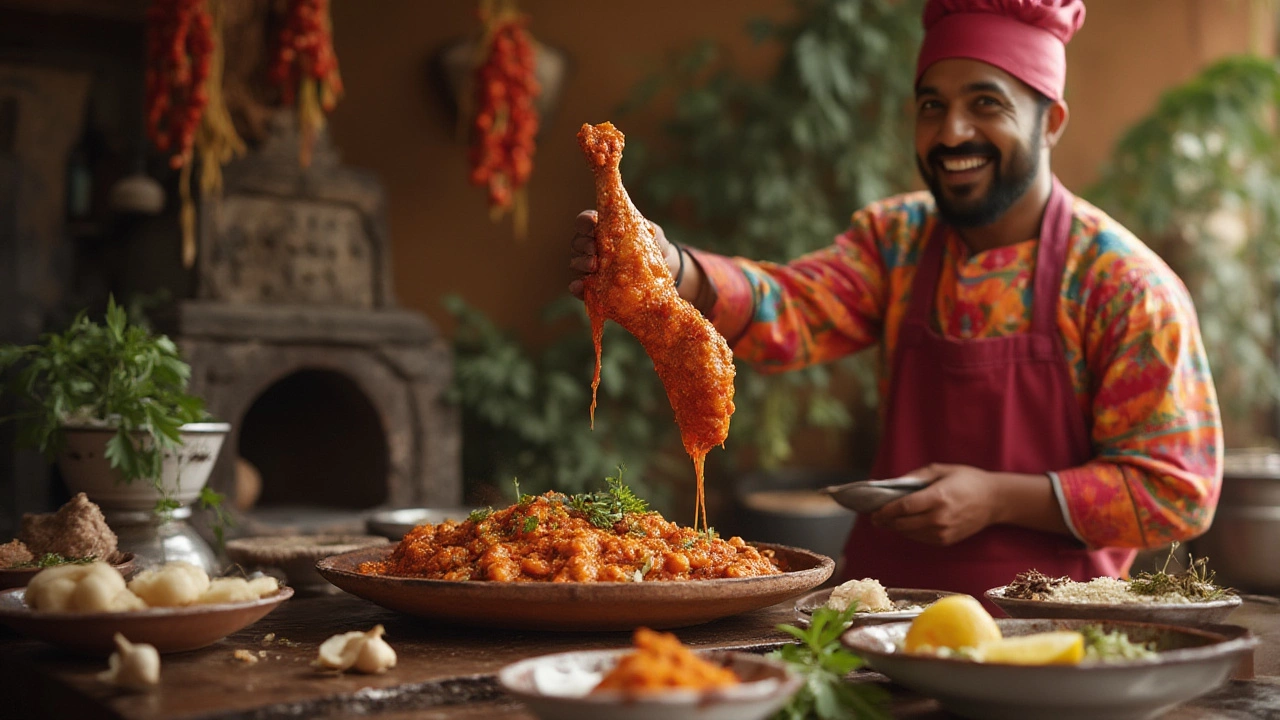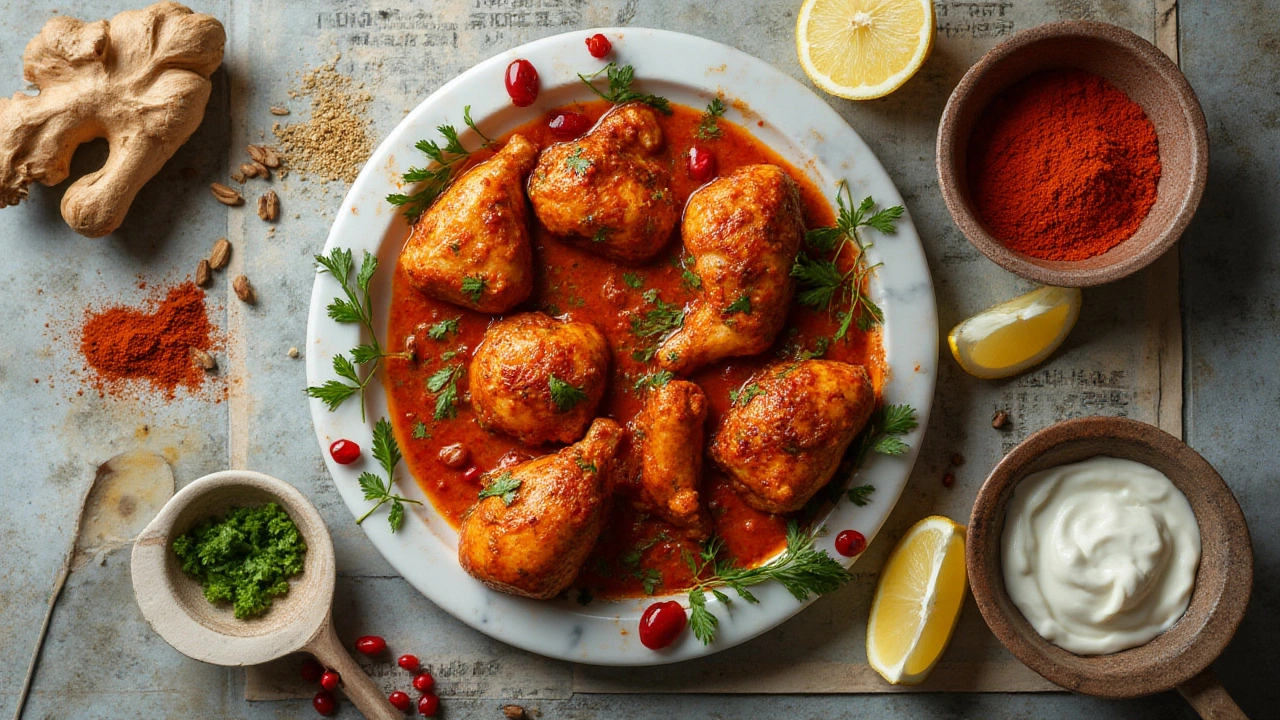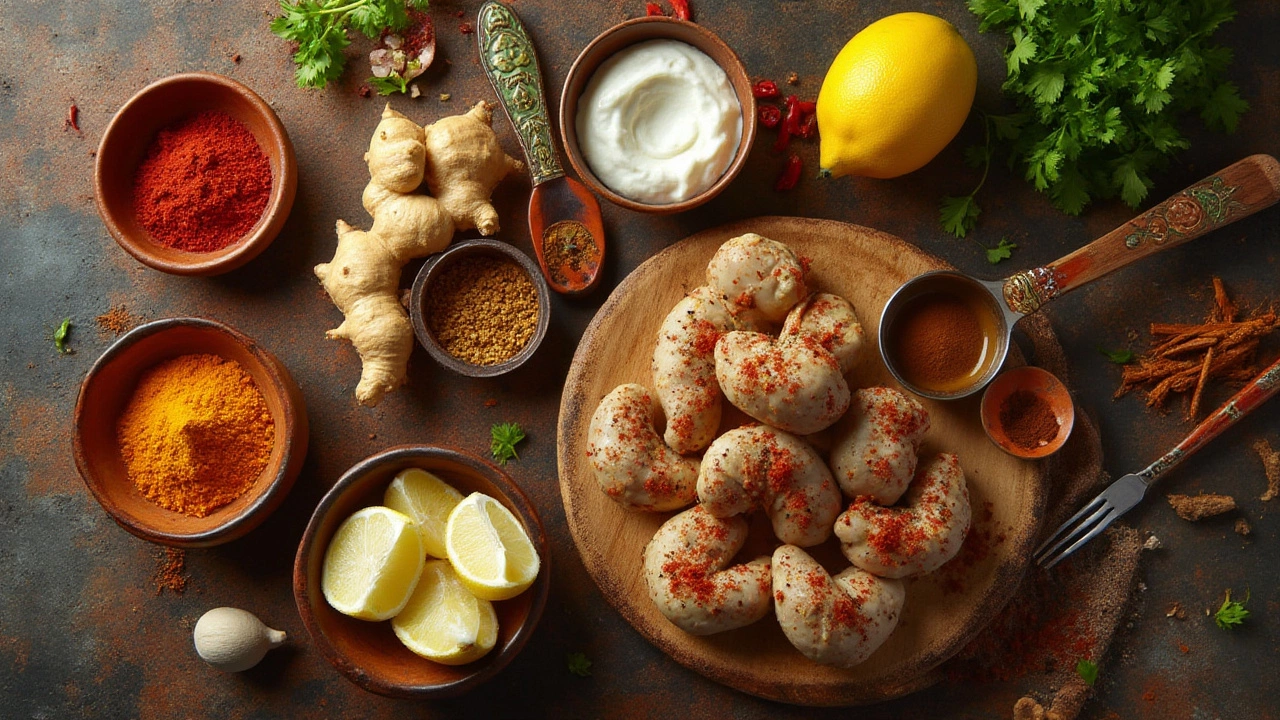If you’ve ever eaten tandoori chicken, you know the sauce isn’t just a sidekick. It’s the hero, pulling you in with that crazy good burst of flavor and color. There’s a reason folks all over the world crave tandoori chicken, and it has everything to do with what goes into the marinade. Sure, it looks fancy on a restaurant platter, tinged red-orange and grilled just right, but the magic begins long before it hits the oven. Almost every Indian family has its own version of the tandoori marinade, and restaurants add their signature twists, too. But the building blocks rarely change, giving tandoori chicken its iconic taste and power to make your mouth water at first sight. Why does it matter? Because knowing what’s in the sauce means you can whip it up at home—no tandoor oven required. And if you tinker with the ingredients just a little, you can get that smoky, spiced magic to work for you in wings, grilled veggies, paneer, and much more.
The Essential Ingredients: What Goes Inside Tandoori Chicken Sauce?
The base of every tandoori chicken sauce is a creamy, tangy yogurt. Thick, full-fat yogurt is best, because it hugs the chicken, holds the spices, and keeps everything juicy as it cooks. No Greek yogurt where I grew up, but it works well if you want a more tender, less watery marinade. The acid in yogurt isn’t just for kick; it actually sets the stage for tender meat, helping to break down tough fibers as it sits.
The real action is in the spice mix. Classic tandoori masala usually includes ground coriander, cumin, cumin seeds, turmeric, and plenty of garam masala (that’s a blend of black pepper, cardamom, cloves, and cinnamon—think Christmas but spicier). If it’s not red enough, that’s where Kashmiri chili powder or paprika steps in, giving the sauce its signature fiery hue without blowing your head off with heat. Little-known fact: restaurants often deepen the color with food-safe red coloring, but honestly, you can skip it and still get that punchy look with Kashmiri chili alone.
Garlic and ginger are a must—use them fresh if you’ve got them, because powders just don’t give the same depth or kick. Most traditional recipes use both in equal measure, so you get the freshness and heat without letting either one overpower the rest. A squeeze of lemon or lime adds acidity, and a big pinch of salt ties it all together. Sometimes, you’ll see a bit of oil or even mustard oil for shine and a slight pungency, but it’s not mandatory for home cooks.
Here’s a simple chart to break down the typical ingredients in a tandoori chicken marinade for one whole chicken:
| Ingredient | Amount | Role |
|---|---|---|
| Full-fat yogurt | 1 cup | Base, tenderizes, adds creaminess |
| Lemon or lime juice | 2 tbsp | Acidity, brightness, tenderizing agent |
| Ginger-garlic paste | 2 tbsp | Freshness, heat, depth |
| Kashmiri chili powder | 2 tsp | Color, mild heat |
| Garam masala | 1.5 tsp | Warmth, complexity |
| Cumin powder | 1 tsp | Earthy flavor |
| Coriander powder | 1 tsp | Fresh, citrusy note |
| Turmeric | 1/2 tsp | Warm color, subtle earthiness |
| Salt | to taste | Balances flavors |
| Mustard oil (optional) | 1 tbsp | Color, pungency |
Sometimes, cooks will toss in crushed black pepper, fenugreek leaves (kasuri methi), or even a dollop of cream at the end. But for most, these aren’t deal breakers; they simply add another layer if you’re going fancy. If you’re curious, classic tandoori sauce in North India rarely calls for sugar or honey. If you see those in a recipe, it’s more of a western fusion.

Mixing, Marinating, and Cooking: How the Sauce Does Its Magic
The way you combine and use these ingredients matters as much as what you put in. You can’t just dump everything together and expect a miracle. Experienced cooks make a quick marinade first—just salt, acid (lemon), and maybe ginger-garlic—to start breaking down the chicken. The meat absorbs the salt and tang, which gets you a deeper flavor later on. After an hour or so, whip up the rest of the sauce, mixing in the yogurt and all the ground spices, and massage it all into the chicken.
This is the messiest, most fun part: get your hands in there, squeeze, coat every nook and cranny, and don’t be shy. That thick, brick-red sauce should hug the chicken so completely that you can barely see the skin. If you’re marinating pieces instead of a whole bird, make slashes in each one so the sauce dives deeper.
How long should you marinate? At least four hours, but if you want the juiciest, most flavorful bite, go for overnight in the fridge. Yogurt does magic as it sits—think of it as a slow backrub for your meat. Too long, though (more than 24 hours), and the acid can start to make things mushy instead of tender.
When it’s time to cook, high heat is your friend. Traditional tandoors hit scorching temperatures of 480°C (900°F). Home ovens and grills won’t get that high, but crank yours up as far as it’ll go—250°C (480°F) is good. Always shake or scrape off extra marinade before you cook, or it’ll just burn.
If you want the gorgeous smoky hint found in real tandoori chicken, you’ve got options—no need for a professional clay oven. The most popular trick in India is called the dhungar method. You heat a little charcoal until red-hot, drop it into a small bowl (a steel katori), then set that bowl in the middle of your marinated chicken. Pour a teaspoon of ghee or oil on the coal, cover the bowl tightly, and let it smoke for a few minutes. The meat soaks up that campfire aroma without ever leaving your kitchen.
Tandoori sauce also works wonders for vegetarian protein like paneer, tofu, mushrooms, or cauliflower. Just treat them as you would chicken but with shorter marinating times—soft veggies break down much faster in the acidic marinade.
People have gotten creative, using the spiced yogurt sauce as a base for wraps, as a dip with potato fries, brushed over roasted veggies, or even stirred into warm rice for a quick spiced pilaf.

Behind the Flavor: Secrets, Myths, and Tips for the Perfect Tandoori Chicken Sauce
Tandoori chicken got popular way before Instagram foodies spread the word. Back in the 1940s, at a tiny Delhi eatery called Moti Mahal, founder Kundan Lal Gujral turned his old clay tandoor oven (used mostly for baking naan) into a chicken-roasting powerhouse. He marinated chicken in yogurt, spices, and garlic, then roasted it at high heat, and created the legend we all chase now. When India’s first prime minister Jawaharlal Nehru tasted it, he reportedly started serving tandoori chicken at almost every official banquet.
Let’s bust a myth: that nuclear red color isn’t authentic. Traditional cooks relied solely on Kashmiri chili and turmeric for color. Restaurant chefs trying to lure in customers with bolder colors started using food dye. If you want to be purist, skip the dye, and the result looks more like roasted sunset than fire engine red.
If you can, roast your spices before grinding them and adding them to the sauce. Toasting amplifies their aroma and flavor, letting the sauce taste rich, warm, and almost nutty. Whole spices last longer too, so they’re a smart pantry upgrade if you love Indian food.
Don’t be shy about using more garlic and ginger if you like a strong punch. In some regions of Punjab, cooks double the ginger-garlic paste for maximum flavor. And if you want a creamier finish, add a spoonful of hung curd (strained yogurt) into the mix; it’s thicker and clings beautifully to the chicken.
Another neat trick: after your chicken is roasted, brush it with a little melted butter or ghee and a dash of chat masala. This gives you that shiny restaurant look and a hint of tang without greasy heaviness.
The health angle? Tandoori marinade has less oil or fat than Western cream-based sauces. And since you grill or bake the chicken, most of the fat drips away. A 2023 nutrition study in India’s Food Science Weekly showed that tandoori chicken contains 35-40% fewer calories per 100g compared to traditional fried chicken recipes.
Here’s a pro tip: don’t throw out leftover marinade if you’ve kept it untouched by raw chicken. Use it to marinate veggies or as a spicy dressing for potato salads. If you want to thicken it for dipping, add a little chickpea flour (besan) and cook over low heat until it bubbles and becomes smooth.
Bored of chicken? Try the same sauce on fish fillets or shrimp. Marinate for just 30 minutes and grill quick for a bright, smoky seafood feast.
There’s something about making your own tandoori chicken sauce that makes even weeknight dinners special. Every batch is a little different—you control the heat, the zest, and whether to sneak an extra handful of cilantro into the mix. Get messy, taste-test, and watch friends ask how you did it. Next time you see “tandoori” on a menu, you’ll know exactly how the magic happens behind the scenes.
